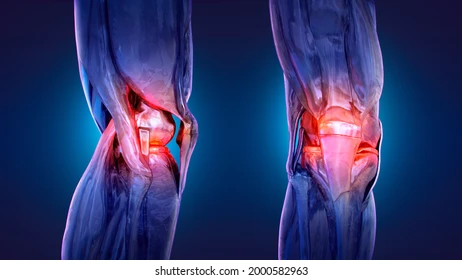Arthroplasty is a common orthopedic surgical procedure that replaces or remodels the articular surface of a musculoskeletal joint. This procedure can be done to repair damage to a particular joint caused by an injury or degenerative disease. Arthroplasty can be performed on either the knee or the shoulder and can include a variety of surgical techniques. Read on to learn more about arthroplasty and the recovery time after this surgery.
Joint replacement surgery
The primary aim of joint replacement surgery with arthroplasty is to restore joint function and reduce pain. Surgical procedures are also used to achieve long-term service life and minimize secondary complications. In addition, patients should enjoy high levels of pain-free mobility after joint replacement. These goals are essential for leading an independent life and preventing social isolation in older age groups. Among other goals, arthroplasty is also an excellent way to reduce the risk of future joint problems.
A patient’s condition will determine whether joint replacement surgery is the best option for him or her. In most cases, the surgery is performed on patients with advanced end-stage joint disease and a significant decline in their physical abilities. Patients who experience persistent pain and functional disability should ask their surgeon about arthroplasty procedures. Fortunately, less invasive surgical techniques have improved the outcomes of joint replacement. In general, the recovery time is less than 24 hours.
Most people can return to their daily routines the day after joint replacement surgery. Physical therapy may be required for several weeks after surgery. Patients are usually sent home with instructions for further physical therapy. Depending on their condition and recovery time, most patients can return to normal activities within one to three months. However, a patient should be aware of the limitations of the procedure before undergoing it. The patient should make sure that he or she is comfortable and ask for help when he or she feels uncomfortable.
Total joint replacement is an alternative treatment for severe arthritis or certain types of musculoskeletal traumas. During this procedure, the surgeon removes the damaged part of the joint and replaces it with an artificial joint structure designed to simulate the natural motion of the joint. An outpatient procedure is increasingly popular in recent years, but it is not for everyone. To be eligible, a patient must be healthy, self-motivated, and have a responsible caregiver at home.
Recovery time after arthroplasty
The exact timing of recovery after arthroplasty is not determined by the procedure, but patients can generally return to their normal activities six to eight weeks after the surgery. While some patients can resume their normal activities at this point, others may need to wait as long as two years. At around seven weeks, patients can begin doing low-impact activities, such as walking and biking. During this time, scar tissue and muscles will begin to heal. It is important to avoid activities that may result in falls, such as running or jumping and talk to your doctor to see what types of physical activity are safe.
Swelling is a normal part of recovery after arthroplasty. Swelling can be severe or moderate for several days but will subside over time. Patients who are taking narcotic pain medications should not drive. It is important to discuss this decision with your surgeon in advance. Returning to work may be possible, but it depends on the type of work you perform and your physical activity level. If you have a demanding job, you may need to wait for three months.
After your arthroplasty, you’ll be in the hospital for about two to three days. Depending on the type of surgery, this recovery time can vary widely. While you’re in the hospital, your hospital will provide you with pain medications. These will be administered through a tube or injection. During this time, you should try to take them as directed, as needed. To help prevent fluid accumulation inside the wound, remember to breathe deeply and cough often.
Complications of arthroplasty
Several complications are possible following arthroplasty, and patients should discuss them with their healthcare team. Pre-operative tests may include chest X-rays, electrocardiograms, and blood work. Some procedures require a CT scan or MRI before the operation. Patients should inform their healthcare provider of any current medications and health conditions, and not eat or drink for the night before the operation. Patients should also disclose any allergies.
While joint replacement surgery can provide relief from pain and stiffness, not everyone will experience the same degree of recovery. Depending on the type of joint replacement and how much it affects the patient’s lifestyle, recovery time for arthroplasty may vary. During the first two weeks after surgery, physical therapy may be necessary to strengthen the muscles around the joint, and this can help the patient get back to normal activities.
There are several studies evaluating the risk of pulmonary embolism after arthroplasty. However, the issue of whether thromboprophylaxis is necessary for prevention is still highly debated. In a study of primary hip replacements performed in 1990, Fender et al. evaluated the records of all patients who underwent a hip replacement. They found that fatal pulmonary embolisms occurred in 0.19% of patients. However, this number is based on a large study, with patients undergoing six thousand or more surgeries. Another study conducted in the 1990s by Wroblewski et al. reported 122 deaths caused by pulmonary embolism after arthroplasty.
Some patients may benefit from a second opinion before undergoing arthroplasty. While medical treatments can delay the progression of RA, some patients may still require the procedure to restore full function. A second opinion is essential, and patients should be sure to discuss their risks and expectations with their healthcare provider before undergoing the procedure. Once the procedure is complete, arthroplasty can improve your quality of life. A second opinion is essential, and it may be necessary if other treatments are not working.
Shoulder joint replacement surgery
Shoulder joint replacement with arthroplasty is a type of surgery that replaces a part of the shoulder. During the procedure, the orthopedic surgeon removes the ball from the joint and places a metal or ceramic stem inside the upper arm bone. The stem is then attached to a prosthetic device. The new joint is then positioned in the space, and the prosthetic part is firmly attached with surgical cement. The reshaped shoulder section is lined with a plastic or ceramic cup and the ball is then inserted into the socket. After the joint is fitted, the incisions are closed, and the patient can return to normal activities two to six weeks after the procedure.
Recovery time depends on the severity of arthritis and the extent of the surgery. Most shoulder replacement patients require at least three months of recovery, and up to several months before they can resume strenuous activity or perform exercises. Following surgery, patients are typically placed in a simple sling and start gradual self-directed motion. Physical therapy typically begins at six weeks and lasts for ten to twelve weeks. A shoulder replacement surgery should only be performed if conservative measures have failed.
Patients who have undergone shoulder joint replacement surgery with arthroplasty should be in good physical condition to avoid postoperative complications. One of the most common risks associated with this procedure is an infection of the prosthesis. Patients must notify their doctors of any underlying health conditions that could impact the outcome of their procedure. This includes x-rays and physical therapy. After surgery, patients will notice a noticeable difference in their ability to move their shoulders. The feeling of grinding in the joint will be gone.
Total hip arthroplasty
The term arthritis is used to refer to inflammation of the joints, which can lead to a variety of debilitating complications. More than 100 different types of arthritis can be present in the hip. In some cases, this inflammation can lead to a loss of cartilage, resulting in a total hip replacement. The underlying problem causes pain and stiffness, and surgery is the only treatment for a condition such as this.
After the procedure, the hip will be stabilized. However, there are some risks to the procedure, which include infection and removal of the artificial parts. Another risk is a fracture of the healthy part of the hip joint, which may require additional surgery to stabilize it. The overall success rate of hip replacement is about 90 percent. The operation may require some follow-up visits or rehabilitation to make sure it is working as expected. After a total hip replacement, the chances of a patient returning to his or her active lifestyle are excellent.
In general, total hip arthroplasty provides great pain relief for many patients suffering from most types of hip arthritis. A vast majority of patients report an improved quality of life following the surgery. Many patients undergo the surgery after trying non-operative measures such as activity modifications, pain medications, and cane usage. In scientific studies, success rates are higher than 90 percent. While it does not cure every type of hip arthritic condition, it is a worthwhile investment for many patients.
The procedure is often performed under general anesthesia. The procedure can last one to two hours. There are several options for pain control during hip replacement. The most common approach is the posterior one. The surgeon makes a 10 to 15 cm skin incision on the posterior aspect of the greater trochanter. Next, the surgeon separates the gluteus maximus and fascia lata. Once this is done, the surgeon will then uncover the short external rotators, which are retracted over the sciatic nerve. Depending on the surgeon’s approach, he will also make a capsulotomy.



































